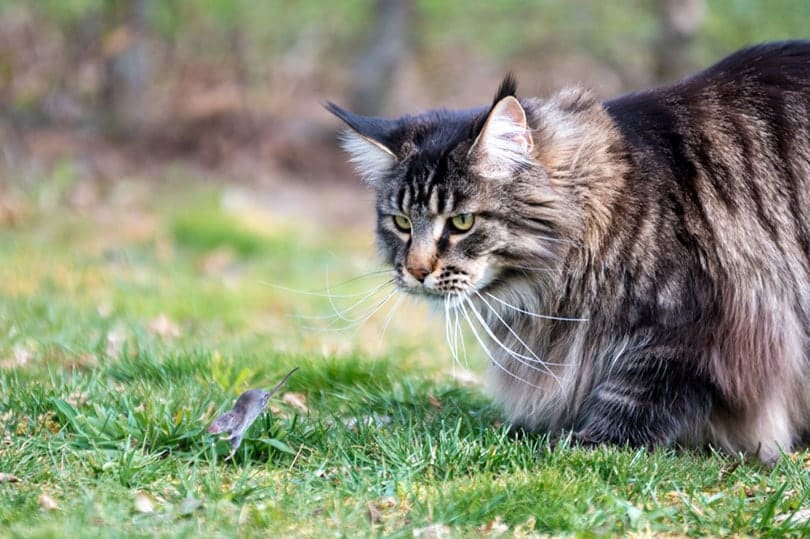
www.catster.com
Working Cats: Felines That Have Important Jobs &; How to Have One
The post Working Cats: Felines That Have Important Jobs &; How to Have One by Catster Editorial Team appeared first on Catster. Copying over entire articles infringes on copyright laws. You may not be aware of it‚ but all of these articles were assigned‚ contracted and paid for‚ so they aren't considered public domain. However‚ we appreciate that you like the article and would love it if you continued sharing just the first paragraph of an article‚ then linking out to the rest of the piece on Catster.com.
As your cat basks in the glow of the high noon sun‚ you may be wondering if felines ever do anything except eat‚ play‚ and sleep. The truth is‚ cats are so domesticated now that some are spoiled beyond employment for heavy-duty jobs such as pest control. My own cats have become so lazy that they don’t always bother to catch the occasional annoying fly‚ but simply follow it with their eyes (which‚ I also do apparently since the fly got away in the end).
Unlike my cats‚ not all felines are fortunate enough to live in loving homes where everything is provided for them. Some cats live on the streets with the minimum necessities for life. They’ve never known the love of a human and aren’t typically fit to be good pets since they’re partially wild. However‚ working cat programs can give these cats a second chance when they’re caught in trap-neuter-return (TNR) programs and find themselves unable to be released back into their former environment.
What Is a Working Cat?
A working cat is a feline who’s “employed” as a pest control alternative to harsh chemicals. It’s a symbiotic relationship for humans and felines‚ since humans are able to eradicate rats‚ and the cats generally enjoy a lifestyle that’s a step above what they’re used to. Working cats usually come from shelters as part of the TNR program. Under this plan‚ feral community cats are caught‚ neutered‚ treated with medicine and vaccines as needed‚ and then ideally released back into the wild.
However‚ sometimes there’s an outstanding reason why they can’t go back home. Maybe they lived in a dilapidated shed that’s now torn down‚ or whoever notified animal control hated the cats in the first place. If the cat is in poor health‚ they also may not be able to be released. Since they’re unfamiliar with humans‚ feral cats who can’t go home are in serious danger of being put on the euthanasia list since they can’t be adopted either.
Most community animal shelters or humane societies have implemented a working cat or feral cat program to save these animals that would otherwise slip through the cracks. These cats are often called “barn cats” or “warehouse” cats‚ denoting their typical places of employment. A working cat will catch mice just like they did in the wild‚ but on the grounds of a farm‚ church‚ or warehouse. Otherwise‚ that facility would have to implement alternate pest control measures that might not be as healthy for their crops or congregation‚ such as chemical pesticides.
How to Acquire a Working Cat
If you have a pest control problem at your business or if you own a facility such as a small farm that needs constant maintenance‚ you might consider contacting your local humane society to inquire about their feral cat program. Just know that the process is a little different than adopting a pet.
Feral cat adoptions are usually free. However‚ oftentimes you must take a minimum of two cats‚ and you aren’t necessarily allowed to choose which ones. Feral cats are scared of humans and wouldn’t tolerate people “shopping” in their shelter all day long‚ so the staff usually picks the cats to relieve them from the stress of constant visitors.
To adopt a feral cat‚ you’ll need to make sure you can always provide:
Food
Water
Litter
An enclosure or shelter that’s safe from rain or harsh weather
This list is your working cat’s “minimum wage.” Some cats may even develop a friendship with their employer‚ even if they’re not quite as friendly as devoted house cats.
What Is a Therapy Cat?
I welcome cat snuggles all day any day (even now while I’m writing this article)‚ but they’re especially appreciated whenever I feel lonely or upset. Therapy cats use their purring skills to provide calming and healing benefits to the people they meet. They’re often taken to nursing homes to comfort residents who may be feeling lonely.
Unfortunately‚ the current Americans with Disabilities Act only grants the title of service animal to canines‚ which means there are many restrictions on where a therapy cat can go. For example‚ no laws currently permit felines to visit restaurants or grocery stores‚ or unconditionally allow cats in any public area. However‚ a trained and licensed therapy cat may be received into specific hospitals‚ schools‚ and other public places where they can work if their handlers obtain prior permission.
How to Train Your Cat as a Therapy Cat
Cats and their handlers must undergo several hours of supervised training and pass individual inspections to be qualified as a therapy team. If you’re interested‚ research organizations like Love on a Leash for more details and requirements.
How to Adopt an ESA
Since they’re not granted the full rights of a service animal‚ therapy cats basically function as emotional support animals (ESAs) for the community. Individuals may also acquire an emotional support cat to give them comfort day and night. There are no strict requirements for registering a cat as an ESA‚ and you can even register a pet you already have‚ but you’ll need a letter of recommendation from a licensed mental health professional to qualify for registration. Since there really aren’t any qualifications for the type of cat‚ you might try to visit your shelter and ask for a feline with a calm demeanor to serve as your ESA if you don’t currently have a kitty.
The benefits of registering your cat as an ESA include fewer housing restrictions. Per the Fair Housing Act‚ your landlord must accept an ESA under their roof without requiring a pet deposit—even if the house isn’t deemed “pet-friendly.” Only a few exceptions apply‚ such as if the landlord also lives in the house or if the complex is designated for senior living. Some airlines may also allow emotional support cats to fly in the cabin without an additional fee‚ although this practice has been on the decline over the last couple years.
Just For Fun: Cats Can Be Booksellers‚ Too
Cats can serve pivotal roles in pest control and therapeutic assistance‚ but they can also gather their community over a shared love for felines and fiction.
The thick black cat watched me from the deep‚ old-fashioned shop window at The Haunted Bookstore in Mobile‚ Alabama. He had been taking a nap‚ but when he noticed he had a customer‚ he crawled off his daybed and came over to greet me. Affectionate‚ he rubbed his body against my hand and waited for the pettings which were eagerly given.
After my friend and I crooned over him for a few moments‚ the human bookseller behind the counter told me that his name was Mr. Bingley. I immediately appreciated his prestigious name‚ which comes from Jane Austen’s Pride and Prejudice‚ and seemed fitting for the resident bookstore cat. I can attest that Mr. Bingley takes his job very seriously‚ bonding with the customers so they don’t want to leave the store. If you search the shop on Google Maps‚ you’ll see “cat” is actually the most mentioned word in the bookstore’s reviews‚ and some people have jokingly said he’s the most overworked employee. I hope he earns employee of the month.
Conclusion
They may try to fool us by napping for long stretches on the couch‚ but cats are capable of many different types of jobs‚ depending on the particular cat. Even your own cat may be registered as an emotional support animal if you obtain a letter of recommendation from a licensed mental health professional. Feral felines who are unfit for adoption may be drafted into a local working cat program‚ where they’re guaranteed to have at least food‚ water‚ litter‚ and shelter in return for catching pests.
Some cats‚ like the affectionate Mr. Bingley‚ may take on odd jobs such as booksellers‚ or groundskeepers like Mrs. Norris in the Harry Potter trilogy. While felines currently don’t have the same service animal protections available to canines‚ cats may serve as therapy animals in certain settings‚ as long as they’re trained‚ registered‚ and have particular permission from the hospital or school where they’ll be visiting.
Sources
https://www.loveonaleash.org/Therapy-Pet/
https://www.google.com/maps/uv?pb=!1s0x889a4fdcb17fed19%3A0xbe336c2227b07815!3m1!7e115!5sGoogle%20Search!15sCgIgAQ&;hl=en&;imagekey=!1e10!2sAF1QipM7bIVvNhrchmzGxy98yr-tvFHsaVPMa0ZmugFs&;sa=X&;ved=2ahUKEwjqyqCD3tP7AhWKlGoFHc1fASIQ9fkHKAF6BAgBEBY
https://humaneanimalrescue.org/programs-and-services/other-programs/working-cats/
https://www.dailypaws.com/living-with-pets/pet-owner-relationship/therapy-cat
https://ocgainesville.org/working-cat-program
Featured Image Credit: Jumpstory
The post Working Cats: Felines That Have Important Jobs &; How to Have One by Catster Editorial Team appeared first on Catster. Copying over entire articles infringes on copyright laws. You may not be aware of it‚ but all of these articles were assigned‚ contracted and paid for‚ so they aren't considered public domain. However‚ we appreciate that you like the article and would love it if you continued sharing just the first paragraph of an article‚ then linking out to the rest of the piece on Catster.com.

















